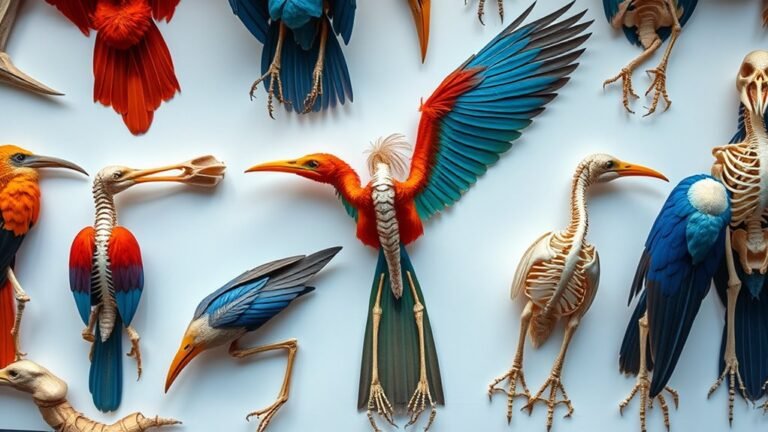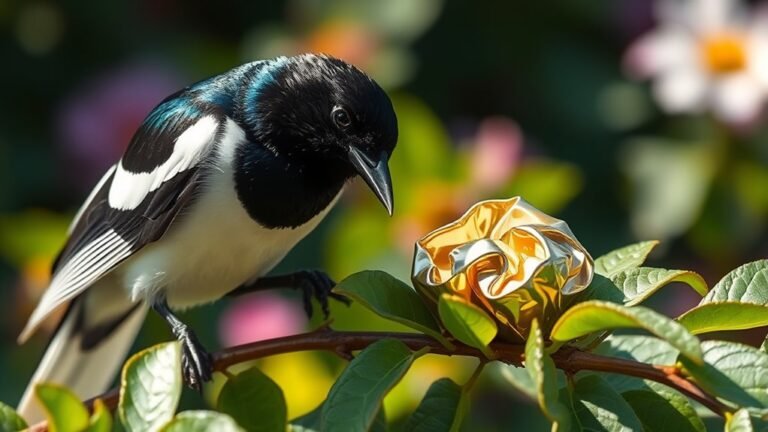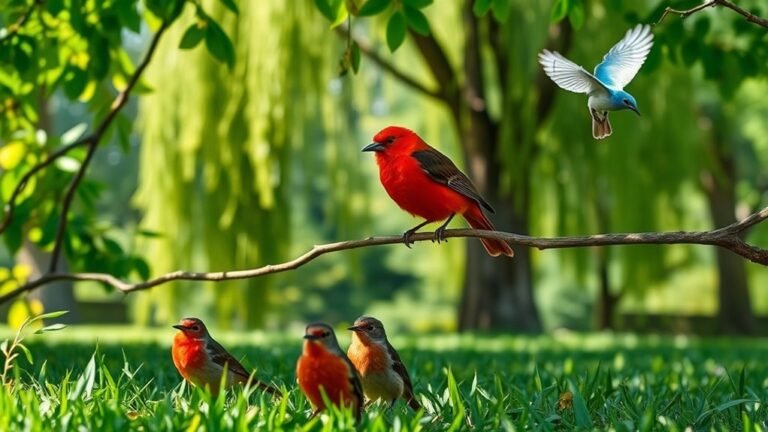The Complete Life Cycle of a Bird
Birds have a clear life cycle that starts with the formation of eggs. These eggs are more than just shells; their structure is important for the embryo's growth. During incubation, the right temperature and humidity are crucial for the eggs to hatch successfully. After hatching, the chick emerges, which leads to important care and growth stages. This process is vital for the bird's development into a fully grown adult.
Key Takeaways
- Birds begin their life cycle as eggs formed in the female's reproductive system, containing essential nutrients for embryo development.
- After laying, eggs undergo incubation, where temperature and humidity are crucial for successful embryo growth until hatching.
- Hatching occurs after a specific period, with environmental factors influencing the time required for young birds to emerge from their eggs.
- Once hatched, chicks experience a nestling stage, requiring parental care, high-protein food, and warmth to support rapid growth and feather development.
- Fledging marks the young birds' transition to independence, as they learn essential survival skills before reaching adulthood and engaging in mating behaviors.
The Egg: Formation and Characteristics

The formation of a bird's egg starts in the female's reproductive system. The ovaries produce and release yolk into the oviduct. As the yolk moves through the oviduct, it gathers layers of albumen, membranes, and a hard shell. This process leads to differences in egg composition between species.
The main components of eggs are proteins and calcium carbonate, which are essential for the development of embryos.
Egg color plays a key role in bird life. It can help with camouflage, parental care, and choosing mates. For example, speckled eggs can protect against predators, while bright colors may attract partners.
Understanding these details shows how birds have adapted over time, enhancing our appreciation for their part in nature.
Incubation: The Waiting Period
After a bird lays an egg, the incubation phase starts. This period is crucial for the developing embryo. Parents care for the eggs, providing essential conditions for growth.
Temperature and humidity are vital. Different bird species have varying incubation times based on their habitat needs.
Here are important points for effective incubation:
- Maintain egg temperature: The right warmth is important for the embryo's health.
- Rotate the eggs regularly: This ensures even development and prevents the embryo from sticking to the shell.
- Monitor environmental factors: Changes in conditions can affect how quickly the embryo develops.
- Provide consistent parental care: Ongoing attention increases the chances of successful hatching.
Learning about these aspects helps us appreciate the variety of bird species and their caring behaviors.
Hatching: The Beginning of Life

Hatching is an important stage in a bird's life cycle. It usually happens 10 to 90 days after the eggs are laid, depending on the species. Temperature plays a key role in this process. The right incubation temperature helps the embryo grow and affects when the chick will hatch.
The characteristics of the egg, like shell thickness and moisture content, also influence survival during hatching. Some bird species adapt to different environmental conditions, which helps their chances of success.
When the chick breaks out of the egg, it begins its life and immediately relies on its parents for warmth and food. This moment highlights the deep connection in nature's cycle of life.
Nestling Stage: Growth and Development
After a chick breaks free from its shell, it enters the nestling stage. During this phase, the chick grows quickly. Parents play a crucial role in its survival by providing care.
Here are key growth milestones:
- Feather Development: Feathers start to grow, helping the chick stay warm and prepare for flight.
- Nutritional Needs: Parents feed the chick high-protein food to support muscle and organ growth.
- Growth Milestones: The chick gains weight and height, indicating good health.
- Fledgling Behavior: As they develop, nestlings show behaviors that help them prepare to leave the nest.
Recognizing these aspects of nestling development emphasizes the need for supportive environments for chicks.
Such nurturing helps them thrive and transition into healthy adults.
Fledging: Transition to Independence

As young birds near the end of their development, they experience a crucial change called fledging. In this stage, they prepare to leave the nest and gain independence.
Fledgling behavior becomes important, as they practice flying and explore their surroundings. Parent birds help them learn essential skills for living on their own. This includes finding food and avoiding danger.
Interactions with siblings also help them adapt to life outside the nest. As they start to depend on themselves for nourishment, meeting their food needs becomes vital.
This process builds their strength and fosters a sense of belonging in their new environment.
Adulthood: Maturity and Reproduction
Once young birds leave their nests, they start adulthood. In this stage, they encounter new opportunities and challenges for reproduction. You can observe their mating behaviors, which are key for the survival of their species.
Successful reproduction includes several important steps:
- Courtship Displays: Males often show bright colors or sing to attract females.
- Nesting: Pairs bond and build nests for laying eggs.
- Mating Rituals: These behaviors vary but are essential for mate selection.
- Parental Care: After eggs hatch, both parents usually feed and protect the chicks.
Sharing parenting responsibilities improves the chances of young birds surviving. This behavior strengthens social ties among the species.
Witnessing this process highlights the beauty of nature's cycles.
Frequently Asked Questions
How Long Does a Bird Typically Live After Reaching Adulthood?
Birds generally live between 2 to 20 years after reaching adulthood. Their lifespan differs based on the species. For example, parrots can have long lives, sometimes exceeding 50 years. In contrast, smaller bird species often have shorter lifespans. Understanding a bird's lifespan can help in providing proper care and a suitable environment for them.
What Are Common Predators of Baby Birds?
Baby birds encounter dangers from various predators, including cats, snakes, and raccoons. While parent birds provide care, they cannot always protect their young from these threats. This increases the risk to fledglings during their early growth stages. Understanding these common predators can help in emphasizing the importance of protection during this vulnerable time.
Do Birds Mate for Life?
Many birds form monogamous relationships. They often create lifelong bonds with their partners. Their mating rituals include displays and sounds that strengthen these connections. This commitment improves breeding success and helps their young survive. It also promotes family unity.
How Do Environmental Changes Affect Bird Populations?
Environmental changes significantly affect bird populations. Habitat loss reduces the places where birds can live and find food. Climate change alters food sources and pushes birds to change their migration patterns. These shifts can lead to lower breeding success. As a result, some bird species decline, which negatively impacts overall biodiversity. It is important to understand these effects to protect bird populations and their habitats.
What Are the Different Nesting Habits Among Bird Species?
Different bird species have unique nesting habits. Some birds nest on the ground. Others build nests in trees. Some choose to burrow into the ground. Birds like ducks may create platform nests on water. Some species nest in cavities of trees. Lastly, some birds prefer cliff nesting. Each of these nesting styles is influenced by the bird's environment and the need to protect their young from predators.

Hello, I’m Emily Price, the founder of Birds Affection. As a passionate bird enthusiast and spiritual seeker, I’ve always been fascinated by the symbolic meanings and mystical connections between birds and our lives. On this website, I share my knowledge and insights on the spiritual significance of various bird species, exploring their roles as messengers, guides, and teachers. Through my writing, I aim to inspire and educate others on the profound wisdom and beauty that birds bring to our world. Join me on this journey as we delve into the enchanting realm of bird symbolism and discover the hidden meanings behind these magnificent creatures.







